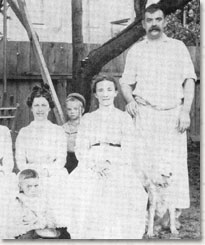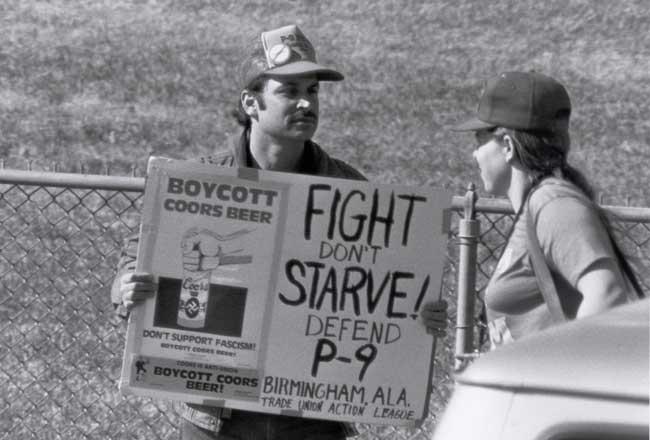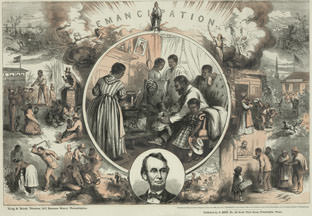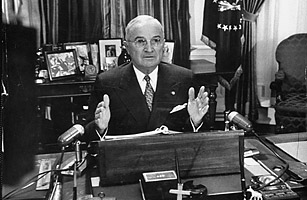
This Day in Labor History: April 16, 1947. The SS Grandcamp exploded in the harbor of Texas City, Texas. Carrying 2,200 tons of ammonium nitrate, this set off explosions that killed at least 581 people! Let's talk about the most deadly workplace disaster in US history! 

This horror exposed the complete lack of safety for workers in the shipyards and led to the first class action lawsuit against the U.S. government.
The ship was built in 1942 and used in the Pacific theater of World War II. It was decommissioned after the war ended and then gifted to the French to help rebuild that nation.
It was docked in Texas City to ship ammonium nitrate developed in Great Plains states for European farmers to use as fertilizer. But this was dangerous, unstable stuff and there weren’t many protections for those who had to handle it.
It was packaged in paper bags. Workers could feel the warmth of the chemical activity through them.
So it shouldn’t have been too surprising when a fire broke out on board. No one knows why the fire started. Some have said that a smoldering cigarette from the night before is likely.
Attempts to fight it failed completely and given the chemical makeup, may have made it worse. After about an hour, the ship exploded.
By this time a lot of people had come to check it out, but standing on shore, they were perfect targets for a 14 foot blast-caused wave that also destroyed about 1,000 buildings. Many of those buildings were also chemical plants.
The ship next to the Grandcamp also carried ammonium nitrate. These disasters compounded. Fires and explosions took place throughout the day. The entire fire department of Texas City, with one exception, was killed.
The Texas City explosion and fire was the largest industrial accident in American history. The total death toll is somewhat of an estimation, as 113 people disappeared without even a body part later showing up.
The initial response was one we expect from disasters even today–talk of an “act of God,” a lot of charity, corporate pledges to rebuild.
What took awhile to take seriously was how indifference to worker safety in the storing and handling of ammonium nitrate killed over 500 people. But the survivors and their family began to sue. These were eventually consolidated into Elizabeth Dalehite, et al. v. United States.
This was possible because of the Federal Tort Claims Act, passed in 1946, which gave private citizens the right to sue the U.S. in federal court for crimes committed by someone working on behalf of the government.
In 1950, a district court found the government guilty of a wide variety of negligent acts around the production, transportation, storage, and loading of ammonium nitrate, as well as around fire prevention and suppression tactics.
While this seemed like a huge victory for the survivors and families, higher courts were uncomfortable with a vigorous interpretation of the FTCA.
The Fifth Circuit overturned the decision 4-3, with the majority finding that the FTCA did not include acts of “discretionary nature,” which private people transporting and loading ammonium nitrate were doing.
The three dissenting judges thought that completely ridiculous and noted the very real responsibility of the government and the intent of the FTCA.
What happened in the end is that Congress stepped in where the courts would not and by 1957, about $17 million in compensation was paid to nearly 1,400 complaints.
This might seem a somewhat odd post in this labor history series. After all, there really isn’t any worker activism or strife. There’s just death and the attempt to get some compensation. But that was the reality for so many workers through the history of capitalist societies.
Safe working conditions are almost always possible. But for reasons of profit, routine, custom, masculinity, laziness, and indifference, working conditions in many professions were not safe and sometimes are still not safe.
The Triangle Fire is the most important workplace disaster in American history, for fairly obvious reasons–not only was it incredibly tragic and in the sight of wealthy New Yorkers, but it also created widespread reform. Far more workers died in Texas City than at Triangle.
But because these were dock workers in Texas and sailors, it simply didn’t matter as much as Triangle.
Texas’ anti-union and anti-regulation mentality was already pretty well developed by 1947; the next year, Lyndon Johnson would win his Senate seat in no small part by outright lying in saying that Coke Stevenson had the support of organized labor.
So the Texas City disaster is basically only notable for the sheer number of dead workers. It doesn’t play an outsized role in American history. It’s a footnote. That’s an absurdity, a shame.
The nation of course moved toward greater workplace safety in the late 1960s and 1970s, with the creation of the Environmental Protection Agency, the Mine Safety and Health Administration, and most importantly, the Occupational Safety and Health Administration.
But while the environmental side of this legislation and regulatory regime at least has some history of good funding, the workplace side of these agencies have hardly ever seen necessary funding.
Much of the reason we don’t have big workplace disasters like Texas City anymore is that so much of the work has either been automated or outsourced. Of course, in the former, that might be a good side of automation.
Anything to keep workers from dying is a positive, although we must create well-paying jobs to replace that dangerous labor.
As for the latter, over 1,000 workers dying to make your clothes while Americans do nothing about it, well, we should probably see that as a gigantic problem worth solving.
In any case, 581 dead workers is a lot of people to have made so little difference on the bigger scope of American history. There are a couple largely descriptive books about the incident, but just as it seems to also have made very little difference in scholarly literature.
Outside of the tort issue, it hasn’t received very much attention from scholars either. A JSTOR search turned up mostly materials from the 40s and 50s, largely about the tort law implications.
Again, there’s a bit of work, but for the worst industrial disaster in American history, not much.
Ammonium nitrate continues to kill workers in the present, such as the West, Texas explosion a few years ago. No meaningful reform came out of that industrial disaster either.
After all, the survivors and their families went to church with the owner and so how could we do anything to make sure more workers don’t die?
Back tomorrow to discuss another fun time, Lochner v. New York
• • •
Missing some Tweet in this thread? You can try to
force a refresh







